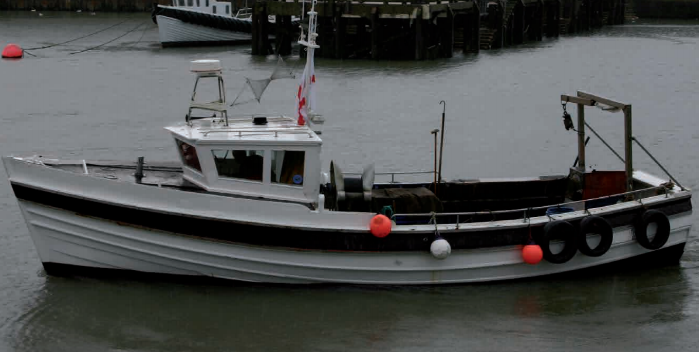UK MAIB analyzed the sinking of a fishing vessel as its bilge pump was overwhelmed by the volume of water ingress. Notable is that the vessel was certified with most recent surveys revealing no areas of concern. MAIB highlighted that the two men onboard were saved as they had enough time to collect and don their emergency use lifejackets.
The incident
At early dawn, a skipper and his crewman set sail in their 10 metre long wooden clinker-built fishing vessel from their home port on the north-east coast of England. Throughout the morning, not many miles offshore, they hauled, re-baited and laid several dozens of lobster traps. In the early afternoon, as they were cruising across to their next fleet of lobster pots, the boat developed a catastrophic leak forward and it flooded quickly.
The skipper started the boat’s electric bilge pump in order to reduce the amount of flooding and increased the engine to full speed heading to his home port. As the water level continued to rise, the skipper broadcasted a “Mayday” distress call, which alerted the coastguard and other vessels for the situation. Within a couple of minutes, the engine cut out and the boat stopped. With the boat
covered with water and about to sink, the skipper and his crewman put on their emergency use life jackets and jumped into the ocean. A nearby fishing boat rushed to rescue them as it had responded to their “Mayday” distress call. Despite the shock of the experience, the skipper and crewman were unharmed and both made a full recovery.
The skipper had purchased the boat about 5 months prior to the accident. Before the transaction, a condition survey had been undertaken. As a commercial fishing boat, it had been surveyed and regularly maintained throughout its life, with certification issued by the MCA. The most recent survey had not highlighted any significant areas of concern.
[smlsubform prepend=”GET THE SAFETY4SEA IN YOUR INBOX!” showname=false emailtxt=”” emailholder=”Enter your email address” showsubmit=true submittxt=”Submit” jsthanks=false thankyou=”Thank you for subscribing to our mailing list”]
During the morning’s fishing, the bilges of the boat had remained dry. The flooding was sudden and was observed to come from the forward part of the boat, and was most likely due to a sprung hull plank. Although the boat was equipped with an electric bilge pump that was started straight away by the skipper, the volume of water eventually overwhelmed it and the boat sank.
Lessons learned
- Both crewmen were saved because they had enough time to collect and don their emergency use lifejackets, and because the skipper raised the alarm and provided rescuers with an accurate position. The boat was equipped with inflatable lifejackets for use while working on deck and on the quayside, but these were not worn. Had the men not been able to collect and don their emergency use lifejackets, and had help not been close at hand, the outcome for them might have been very different. Always wear a lifejacket when working on open decks; it can save your life.
- The boat sank because the bilge pump was overwhelmed by the volume of water coming in. With a plank sprung forward, it is possible that motoring at full speed into the sea further increased the inflow of water.
- SeaFish provides a checklist in its Vessel Safety Folder scheme for Hull Damage. It states:
- Check for damage
- Identify the location of water ingress
- Cut off electrical power in the immediate area
- Shore up area, turn off seacocks or use a fothering sheet to reduce ingress
- Use auxiliary pumps and bucket to remove water
- If necessary prepare to abandon the vessel in enough time not to get caught with the vessel.
4. Skippers should ensure that they and their crew are prepared for foreseeable emergencies, that they have undertaken drills to practise their emergency response, and have suitable equipment identified and to hand if needed.

































































